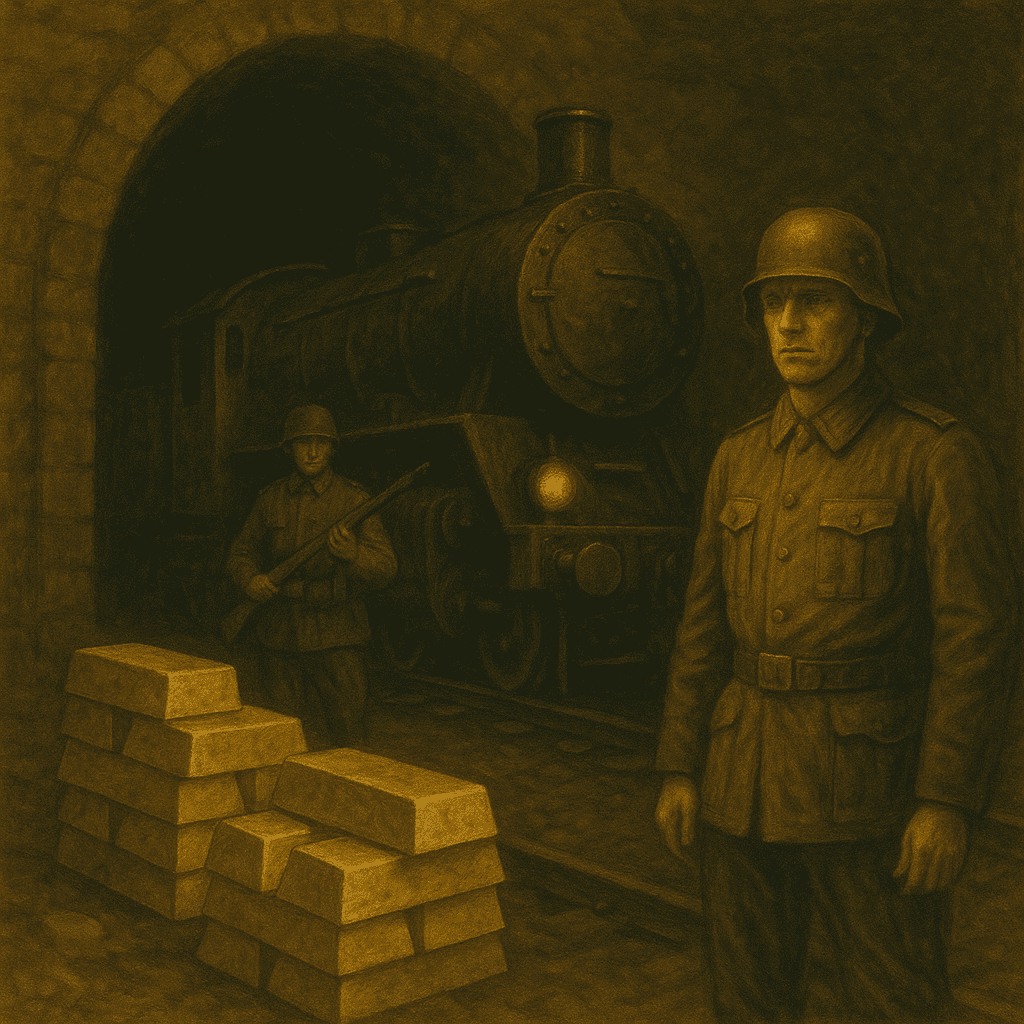
The Nazi Gold Train – Tunnels in Poland

In the closing months of World War II, as the Third Reich crumbled under the advance of Allied and Soviet forces, rumors spread across Europe of desperate Nazi attempts to hide their stolen treasures. Among these stories, one of the most enduring is that of the Nazi Gold Train—a supposed armored convoy laden with gold, jewels, art, and other loot, hidden deep within a network of tunnels in southwestern Poland.
For decades, treasure hunters, historians, and conspiracy theorists have been captivated by the tale. Yet despite international attention and high-tech searches, not a single piece of gold has ever been recovered.
The Birth of the Legend
The legend centers on events in 1945, when Nazi officials allegedly loaded a train with plunder from occupied territories, possibly including valuables from the infamous looting of Jewish property and European art collections. The train was said to have departed from the city of Breslau (today Wrocław) heading toward the mountains near Wałbrzych in Lower Silesia. Somewhere along the route, it supposedly disappeared into secret tunnels—part of the vast underground complex known as Project Riese.
Theories of Where It Went
Over the years, the story has branched into multiple theories:
-
Hidden Tunnel Entrances – Believers claim the train lies sealed in a tunnel beneath the Owl Mountains, hidden behind walls of reinforced concrete.
-
Explosions and Collapse – Some suggest the Nazis detonated charges to bury the train permanently, preventing the Soviets from capturing it.
-
Complete Fabrication – Skeptics argue the story was invented in the chaos of postwar Poland, fueled by survivors' tales and Cold War propaganda.
The 2015 Frenzy
Interest in the Nazi Gold Train reached a modern peak in 2015, when two treasure hunters—Piotr Koper and Andreas Richter—claimed they had located the train using ground-penetrating radar. Their announcement made global headlines, sparking a media storm and even official investigations by Polish authorities.
Excitement soared when officials confirmed that radar images did indeed show an anomaly shaped like a train. Tourism to the Wałbrzych area skyrocketed, and hotels filled with journalists and history enthusiasts. The Polish military was called in to secure the site before excavation began.
The Disappointment
When the digging finally started, reality set in: no train, no gold, no treasure—only natural geological formations. The supposed radar "train" was nothing more than layers of rock and soil. By the end of 2016, the search was officially declared a failure, though some die-hard believers insisted the real hiding place had yet to be found.
Why the Story Endures
The Nazi Gold Train legend persists because it combines all the ingredients of a compelling mystery: wartime secrecy, hidden tunnels, stolen treasure, and the enduring human hope that unimaginable wealth lies just beyond our reach. Poland's mountainous Lower Silesia region still contains unexplored shafts and sealed bunkers from the war, leaving room for speculation—and for the legend to live on.
Conclusion: A Treasure Hunt Without a Treasure
While the Nazi Gold Train has never been found, it has enriched the region in another way—by boosting tourism and fueling fascination with World War II history. The tunnels of Project Riese remain a haunting reminder of Nazi ambition, and perhaps the only gold to be uncovered here is the enduring value of the story itself.


